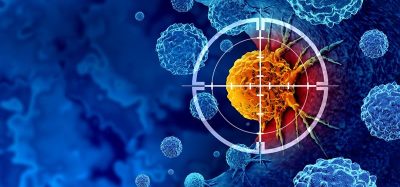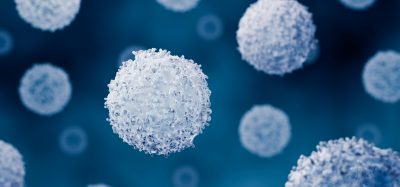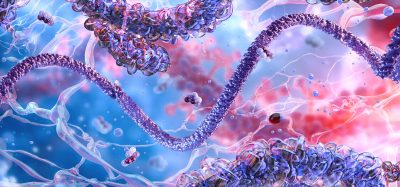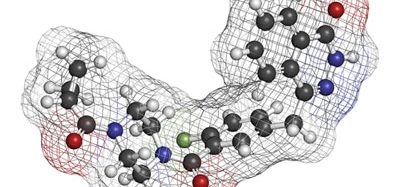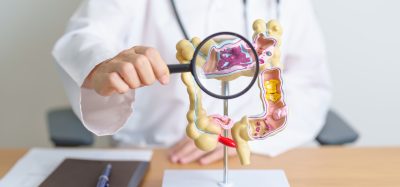Women in Stem with Dr Mrunal Jaywant
Posted: 19 January 2024 | Dr Mrunal Jaywant (USP India), Taylor Mixides (Drug Target Review) | No comments yet
Join us for our monthly Women in STEM series where we showcase and celebrate the achievements of inspiring women in the field. We had the privilege of interviewing Dr Mrunal Jaywant, Vice President of R&D at USP India. At USP India, Dr Jaywant oversees the Compendial Development, the Synthetic Chemistry, and the Analytical Research and Development Laboratories. She is responsible for the development and validation of analytical methods and the synthesis and characterisation of bulk materials of impurities and APIs, to support the development of documentary and reference standards. She is also leading USP’s Nitrosamine Workstream responsible for formulating a strategy globally.
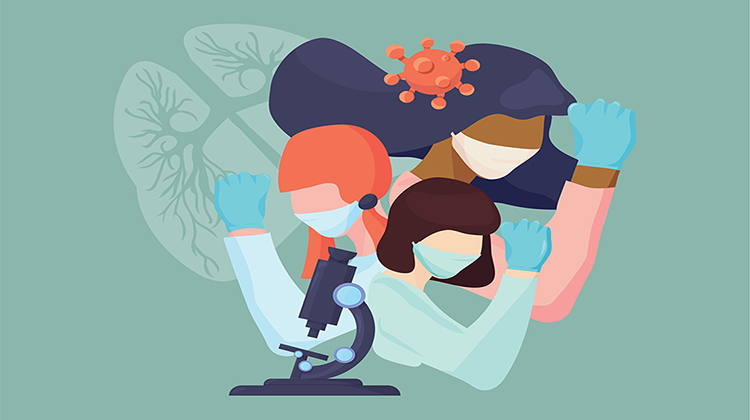

Can you tell us about your journey in the field of STEM and the challenges you encountered along the way?
My journey in the field of science has been highly enriching and gratifying. However, when I started my career in the pharma field, it was a male-dominated industry with minimal opportunities for women to grow and advance as leaders. I started working as a trainee immediately after submitting my PhD thesis in Analytical chemistry to Pune university in India but initially felt immense pressure to prove myself, not only because I was a woman but also because there were very few PhD staff, in general.
I felt I had to work hard (almost twice as hard as my male colleagues) so that people would accept me as an equally competent and committed person at work. It is important that colleagues trust your capabilities and understand your passion for your work, and it took some time for me to build that trust and create allies, especially in an all-male environment.
What inspired you to pursue a career in STEM, and how did you overcome any obstacles or biases you may have faced?
I ended up in STEM completely by accident. For women at the time, there was a myth / perception that we should or would prefer to work in the banking sector or a government job. At first, I wanted to pursue my degree in commerce and become a chartered accountant (C.A.). However, you cannot change what is destined, correct? So, somehow, I ended up in science and once I started, there was no looking back. I felt that I belonged there and decided to pursue a career in the pharma industry.
My peers in most of the organisations I worked at earlier in my career were not doctorates. My PhD guide was a well-known professor and a principal of very renowned college in Mumbai. All his ex-students (our senior colleagues) had established themselves at higher positions in the industry. For us junior colleagues, this put pressure on us to excel. For me as a woman with a PhD, I felt like I had a target on my back and was often singled out.
Slowly, however, my colleagues began to respect me and realized that I am a normal human being who was very passionate about – and good at my job. I started sharing my knowledge with my colleagues and helping them resolve their problems. I gave them on-the-job training that helped them learn new techniques and grow in their careers. Slowly, I earned the respect and trust of my colleagues, peers and seniors.
An example of how I earned the respect and trust of colleagues is during a project that required spending extra hours at the office, every day, including continuous supervision when manufacturing of a batch was in-progress. As a head of analytical R&D, I worked until late at night to help my production team make correct decisions and fulfil all timeline commitments. This set an example and indicated to my male colleagues, who used to think that women could not work at night, that I was committed to my job and also inspired other women at the organisation.
Could you share an example of a specific project or research that you have worked on and the impact it has had in your field?
I worked on a project that required development of a highly sensitive method and analysis of an active pharmaceutical ingredient to determine accurate levels of two potential genotoxic impurities. The project has helped the United States Pharmacopeia (USP) deal with the challenges caused by drug product recalls due to unsafe levels of nitrosamine impurities.
How has your research in STEM contributed to advancements or improvements in your field, and what potential future applications or implications do you foresee based on your work?
After working for pharma companies for nearly 20 years, I decided to work with USP so that I could utilise my skills in the development of standards. My experience in method validation and transfer, analytical procedure lifecycle management (including Analytical Quality by Design approach to method development), use of in-silico tools to predict toxicity, and method development and analysis of PGIs (potential genotoxic impurities)/ PMIs (potential mutagenic impurities) using advanced technologies has helped me contribute to USP’s standards-setting process.
I am currently leading USP’s Nitrosamine workstream, globally. We are responsible for formulating a long-term strategy for addressing nitrosamine impurities in pharmaceuticals.
I leverage my experience to develop new methods, education courses and training materials to support our stakeholders build capabilities. USP has developed compendial standards (documentary and physical reference standards) for nitrosamines (General chapter <1469> and 8 nitrosamine USP RS), educational courses and video tutorials (lab demonstration videos), and non-compendial standards (for which the nitrosamine workstream is mainly responsible), such as publications in international journals, an analytical hub to publish additional analytical procedures (not covered in official standard GC <1469>), the Nitrosamines Exchange (a virtual knowledge hub/ exchange community), and pharmaceutical analytical impurities (additional nitrosamine reference materials) to support our stakeholders across globe.
I am very proud to be part of these solutions and will continue to contribute to developing standards/ solutions that have an impact on how medicines are produced globally, thereby helping patients have access to quality medicines and supporting USP in its mission to improve global health.
As a woman in STEM, what unique perspectives or strengths do you believe you bring to your work?
As a woman in STEM who has overcome barriers and worked extra hard to be accepted, I have developed various strengths over the years:
Confidence in my abilities and my decisions. Even when no one else believed in me, I believed in myself. When I first moved away from my family to a different state and city, it was not accepted easily by society. My colleagues (including women) at work used to think that I was doing something wrong leaving my family to pursue a career. But I believed in myself and was so determined that I proved to my family, my friends, my society that a woman could stay alone and do everything that a man was supposed to do for his family. This mindset has helped me get to where I am in my career today.
Always finding ways to keep myself in the race. This field is growing and evolving rapidly, and it is important to constantly update/ upskill /reskill to stay in the race and have the latest, in-demand skills. This is especially true for women who are expected to know 100 percent of their job responsibilities.
The ability to self-advocate. I have learned that I am my best advocate and that it is important to be visible among leadership and supervisors and communicate strengths and achievements. This opens the door to discussions about career growth and other opportunities.
What advice would you give to young women who are considering a career in STEM but may be hesitant due to societal stereotypes or perceived challenges?
Believe in yourself: You can do anything, nothing is impossible. Challenges will be there, always, but how you handle them is important.
You are the captain of your own career journey. Establish career goals and aspirations, determine a path to get there and don’t let anyone stand in your way.
Don’t limit yourself. Aim high and believe that you can do and achieve anything. The sky is the limit and sometimes you can be your own biggest obstacle.
Surround yourself with the right people. While you are ultimately in charge of your own career path, nurturing strong relationships and finding mentors can help you get to where you want to be and provide you with opportunities to learn along the way.
Be kind to yourself when it comes to work-life balance. This will always be a struggle, especially for women figuring out how to balance career and family. However, it helps if you acknowledge that sometimes your life will tilt more to the professional side and other times more to the personal side. The key is recognizing it and trying to correct it.
How do you see the representation of women in STEM changing over the years, and what further progress do you believe is needed?
The world is changing and now there are a lot more companies who are promoting and practicing Diversity, Equity, Inclusion and Belonging (DEIB) in their organisations. USP is one of them, and I am proud to be part of USP’s affinity group, the “Global Women’s Network.” Such initiatives are supporting the growth and development of women as leaders and indicate that we are valued as employees.
It is great to see the progress that has been made since I first started working, but this is just the beginning. We need to continue to promote opportunities for women in STEM. We must work to ensure women get support and respect, not just from their male colleagues, but also to encourage workplaces where women support other women and help abolish stereotypes and change societal perceptions.
In your opinion, what can organisations and institutions do to create a more inclusive and supportive environment for women pursuing STEM careers?
We must move beyond a focus on identifying and attracting women talent, and transition to elevating them to leadership roles and believing in their strengths and capabilities. Organisations and institutions must nurture their female employees so they can grow in their respective fields. This includes providing them opportunities to network, offering mentoring and training programs, involving them at leadership level, making them part of the decision-making process, and not restricting their growth due to societal stereotypes.
Looking ahead, what exciting developments or advancements do you foresee in your field of STEM, and how do you envision your own research contributing to those future innovations?
Moving forward, predictive tools, like automation and artificial intelligence (AI) will be the future of not just pharma, but any industry. For my work and research on nitrosamine impurities, I would like to extend its scope to find ways to predict toxic impurities in medicinal products. New software and computational tools will be important in this area, will transform how proactive we can be, and will help uncover that which will be beneficial to the future of public health and pharma.
About the author


Vice President of R&D at USP India
Dr Jaywant has been with USP for seven years and has more than 27 years of experience in the pharmaceutical industry. At USP India, Dr Jaywant oversees the Compendial Development, the Synthetic Chemistry, and the Analytical Research and Development Laboratories. She is responsible for the development and validation of analytical methods and the synthesis and characterisation of bulk materials of impurities and APIs, to support the development of documentary and reference standards. She is also leading USP’s Nitrosamine Workstream responsible for formulating a strategy globally.
Related topics
Disease Research, Drug Delivery, Drug Development, Drug Discovery, Drug Discovery Processes, Drug Leads
Related organisations
USP India
Related people
Dr Mrunal Jaywant (USP India)



